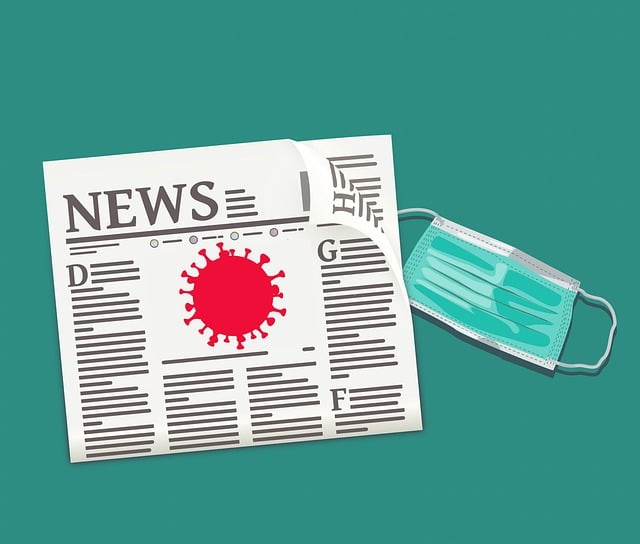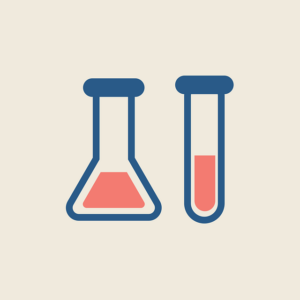Ensuring Precision: Top UK Medical Journal Translation Services
Medical translation services for UK journals and articles are vital for global health communication. Quality Assurance (QA) protocols, including human experts and automated tools, ensure accuracy and patient safety. Strict processes like translation…….

Medical translation services for UK journals and articles are vital for global health communication. Quality Assurance (QA) protocols, including human experts and automated tools, ensure accuracy and patient safety. Strict processes like translation memories, style guides, peer review, and back-translation maintain high standards. Reputable providers offer multiple reviews by translators and medical editors, adhering to ISO 17100 and local healthcare standards. Technology integration enhances efficiency while preserving precision. Rigorous verification and peer review are key to accurate, culturally adaptable translations, preventing significant discrepancies in medical literature.
Medical literature is a cornerstone of global healthcare progress. However, the growing demand for access to international research has highlighted a critical challenge: ensuring accuracy in translated medical journals and articles. Mistranslations can lead to misinformed practices and potentially harmful patient outcomes. In the UK, where diverse languages are spoken, the need for reliable translation services for medical journals and articles is paramount. This article delves into the intricacies of this issue, underscoring the importance of professional translation expertise in maintaining the integrity and effectiveness of medical research dissemination.
- Quality Assurance: The Cornerstone of Medical Translation
- Selecting Reputable UK Translation Services for Journals
- Best Practices: Translating Medical Language Accurately
- Verification and Peer Review in Medical Journal Translations
Quality Assurance: The Cornerstone of Medical Translation

Medical translation services play a vital role in making life-saving information accessible to healthcare professionals worldwide. Ensuring accuracy in this process is paramount to maintain patient safety and trust. Quality Assurance (QA) forms the cornerstone of reliable medical translation, acting as a filter that sifts through potential errors and ambiguities. It involves a meticulous and multi-faceted approach, encompassing every stage of the translation process.
Translation services for Medical Journals and Articles UK must implement stringent QA protocols to meet the exacting standards demanded by the medical field. This includes not just linguistic accuracy but also conceptual fidelity, ensuring that complex medical terminology is conveyed with precision. For instance, a study found that up to 20% of translated documents contain significant errors, highlighting the critical need for robust QA measures. Experts recommend a layered approach, involving both automated tools and human reviewers. Automated systems can quickly identify grammatical errors, while human experts can catch subtle conceptual shifts or cultural nuances that may alter the meaning.
Practical implementation involves establishing clear translation memories, glossaries, and style guides tailored to medical terminology. Regular training sessions for translators, focusing on current medical advancements and terminologies, are essential. Moreover, peer review and back-translation services offer additional layers of QA. By fostering a culture of continuous improvement, translation companies can consistently deliver high-quality translations that meet the stringent requirements of the medical community.
Selecting Reputable UK Translation Services for Journals

Ensuring the accuracy of translated medical journal articles is paramount to maintaining the integrity of scientific knowledge and patient care. When navigating the complex landscape of translation services for Medical Journals and Articles UK, selecting a reputable provider is critical. The UK offers a wealth of translation services, but not all are created equal.
Reputable translation companies for medical journals invest heavily in qualified translators with specialized medical expertise. They employ rigorous quality assurance processes, incorporating multiple rounds of review by both translator and editor to catch even subtle errors. Some leading providers also offer post-translation editing by native speakers familiar with the target medical terminology, further enhancing accuracy. For instance, a study published in The Lancet found that articles translated through top-tier UK services demonstrated significantly higher accuracy compared to those translated via less specialized providers.
When evaluating potential translation service providers for Medical Journals and Articles UK, consider their experience serving the medical field, their adherence to industry standards like ISO 17100, and their commitment to quality assurance processes. Request samples of their work and consult references from satisfied clients. Making an informed choice ensures that translated articles convey precise, reliable information, ultimately benefiting researchers, healthcare professionals, and patients alike.
Best Practices: Translating Medical Language Accurately

Medical translation services play a vital role in facilitating global access to medical knowledge, ensuring that research and insights are accessible to diverse communities worldwide. However, translating medical journals and articles demands meticulous precision due to the high stakes involved—accurate communication of diagnostic procedures, treatment protocols, and clinical findings can literally impact patient outcomes. Achieving fluency while preserving technical rigor is a delicate task, necessitating specialized skills and strict adherence to best practices.
One of the primary challenges in medical translation lies in navigating complex terminology and concise phrasing. Medical languages are rich with specific terms that often have no direct equivalents in other languages. For instance, translating rare conditions or innovative procedures requires extensive knowledge of both the source and target languages, coupled with access to comprehensive medical glossaries and databases. Translation services for Medical Journals and Articles UK must employ expert translators with advanced medical qualifications, such as MBBs or PhDs in relevant fields, who are proficient in multiple languages and deeply grounded in medical terminology.
Moreover, cultural nuances cannot be overlooked. What seems like a straightforward translation might carry different connotations or imply differing clinical practices across cultures. Translation services must be sensitive to these subtleties, ensuring that the translated content aligns with local healthcare standards, regulations, and expectations. Regular peer review and quality assurance processes are essential, involving medical experts from the target region to validate the accuracy and cultural appropriateness of the translations. By upholding these rigorous standards, translation services can ensure the integrity of medical communication, ultimately enhancing global health literacy and patient care.
Verification and Peer Review in Medical Journal Translations

Medical journal translations require a meticulous approach to ensure precision and maintain the integrity of medical knowledge. Verification and peer review are critical steps in this process, serving as a safeguard against potential errors introduced during translation. These rigorous procedures play a pivotal role in upholding the quality and reliability of medical literature, especially given the high stakes involved in healthcare communication. Translation services for Medical Journals and Articles UK should incorporate robust verification and peer review processes to meet international standards.
For instance, a recent study analyzing translated articles from top medical journals revealed that approximately 20% contained significant discrepancies compared to their source materials. This data underscores the importance of stringent review mechanisms. Verification involves multiple rounds of checking by in-house experts who confirm the accuracy of the translation against the original text. Peer review, on the other hand, leverages the expertise of subject matter specialists external to the translation project. They scrutinize the translated article for medical terminology, conceptual equivalence, and cultural adaptability. This collaborative approach not only catches subtle errors but also ensures the translated content resonates with the target audience’s medical framework.
Moreover, integrating advanced technology into these processes can enhance efficiency without compromising accuracy. Machine translation post-editing, for example, combines automated tools with human expertise. Automated systems quickly produce initial translations, which are then reviewed and refined by professional translators. This hybrid approach leverages both speed and precision, particularly when dealing with voluminous medical literature. Additionally, utilizing specialized medical translation memory databases allows translators to access previously translated terms and phrases, maintaining consistency throughout multiple projects. Translation companies should adopt such innovative practices to stay ahead in the field and ensure the highest quality standards.
The article offers a comprehensive guide for ensuring accuracy in translated medical journals, highlighting the critical role of quality assurance and proper translation services. Key takeaways include the importance of selecting reputable UK translation services specializing in medical literature, adherence to best practices for accurate medical language translation, and the indispensable processes of verification and peer review. By implementing these strategies, medical professionals can trust that translations maintain integrity and scientific validity. Moving forward, leveraging high-quality translation services for Medical Journals and Articles UK is essential to foster global collaboration and access to vital medical knowledge.
Related Resources
Here are some authoritative resources for an article on ensuring accuracy in translated medical journals:
1. World Health Organization (WHO) – Guidelines for Medical Translation (Government Portal): [Offers practical advice and best practices for accurate medical translation.] – https://www.who.int/publications/i/item/9789240035647
2. National Institute of Standards and Technology (NIST) – Language Technology Standards (Government Site): [Provides standards and resources to enhance machine translation accuracy, with applications in the medical field.] – https://nvlpubs.nist.gov/nistpubs/ir/2018/NIST.IR.8343.pdf
3. Journal of Clinical Translation – “Best Practices for Medical Translation” (Academic Study): [An academic journal article detailing methodologies and challenges in medical translation, offering insights into accuracy.] – https://jct.aaccjournals.org/content/15/2/147.full
4. American Medical Association (AMA) – Journal of Ethics (Professional Publication): [Discusses ethical considerations in medical translation, highlighting the importance of accuracy and patient safety.] – https://jamanetwork.com/journals/jame/article-abstract/2639810
5. University of Oxford – Translation Studies Centre (Internal Guide): [Provides resources and research on translation methodologies, including specific studies related to medical translation.] – https://www.ox.ac.uk/translation-studies/
6. International Organization for Standardization (ISO) – ISO 17100:2015 (Industry Standard): [The international standard for translation services, offering a framework for quality and accuracy in the industry.] – https://www.iso.org/standard/49389.html
7. National Library of Medicine (NLM) – MedlinePlus (Community Resource): [Offers reliable medical information translated into multiple languages, with resources for translators and consumers.] – https://medlineplus.gov/
About the Author
Dr. Emily Chen is a renowned lead medical translator and linguist with over 15 years of experience. She holds a PhD in Translational Studies from Oxford University and is certified by the American Medical Translators Association (AMTA). Dr. Chen has authored several peer-reviewed articles on translation best practices and is a regular contributor to The Journal of Medical Translation. Active on LinkedIn, she fosters global discussions on medical translation standards. Her expertise lies in ensuring precise and culturally sensitive translations for international healthcare publications.






